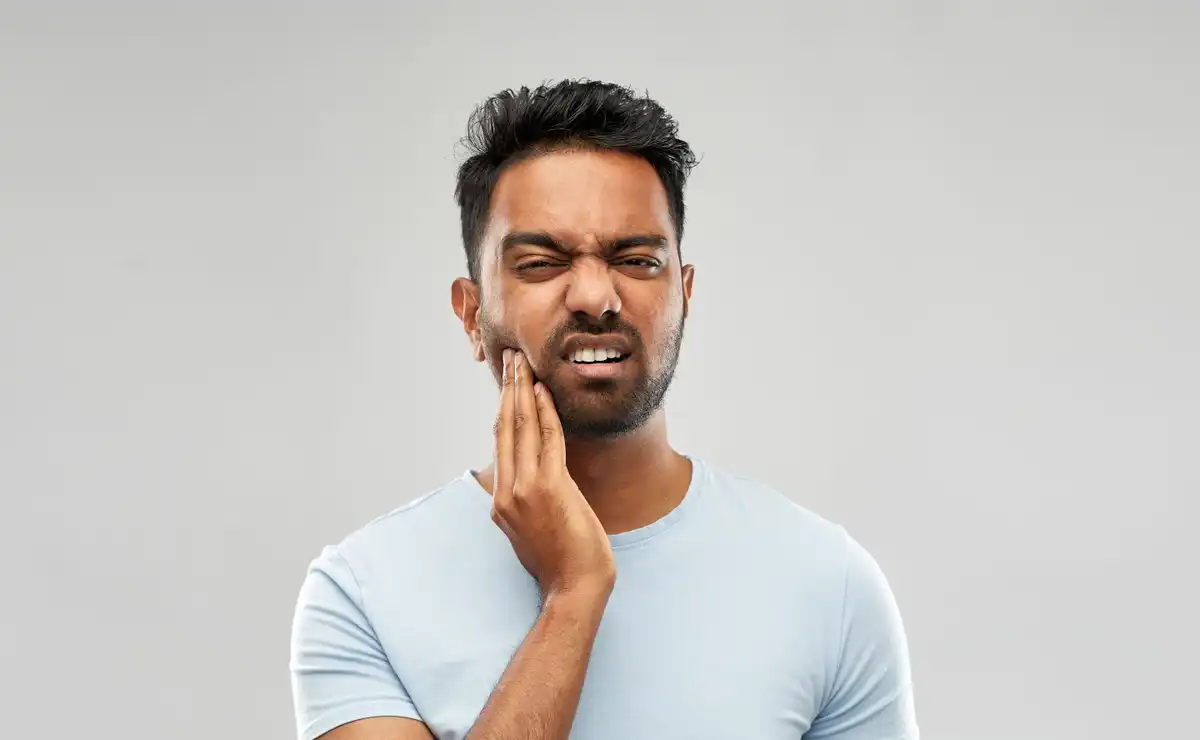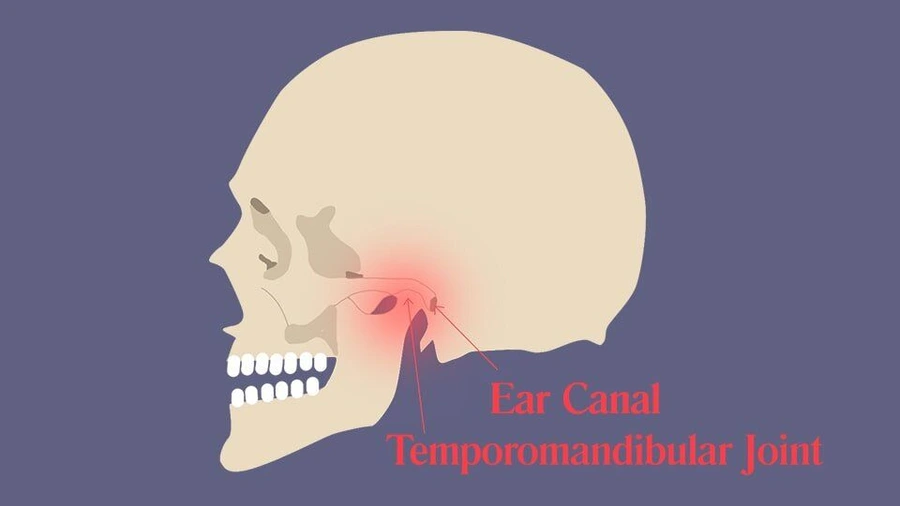TMJ Disorder Causing You Ear Pain? Treatments & Prevention


Are you someone who suffers from occasional or chronic earaches? If you have ear pain, you know how uncomfortable it can be. The sharp, jolting sensation isn’t just painful – it feels debilitating. Like toothaches, ear pain (and kidney stones) are some of the most “normal” and severe forms of pain that a person might experience during their lifetime. But did you know that jaw and ear pain can both radiate from your TMJ? Pain in the ear might not be coming from your ear at all! It could actually be due to your temporomandibular joint.
Common Symptoms: Ear Pain With TMJ Disorder
When it comes to a disorder in your TMJ, pain in the ear may not be the first thing you think of. But since your TMJ is closely associated with your surrounding tissues, muscles, and structural anatomy, other common symptoms and warning signs you might notice include:
- bruxism (teeth grinding)
- misaligned teeth or jaws
- muscle strain or injury
- arthritis
- headaches and/or migraines
- neck and shoulder pain
- stress, anxiety
- sleep apnea
TMJ Disorder
When there’s an injury, strain, or anatomical misalignment associated with your TMJ, a chronic disorder of your joint may develop. TMJ disorder usually results in a limited range of motion, popping or clicking inside of your TMJ when you open/close, joint pain, and you guessed it…jaw and ear pain. But when TMJ pain in ear areas may seem to feel like a traditional ear infection, treating it is completely different. In fact, you might even decide to see an ENT due to the earache, but your ears will look completely normal. The actual discomfort is coming from pressure and pulling around the ear itself.

Ear Pain Relief
Here’s the great news: the best – and most commonly recommended – treatment for TMJ jaw and ear pain isn’t surgery. It’s homeopathic and self-care measures that start at home. Typically, jaw surgery is only recommended if TMD is severe and does not respond to the following types of therapies:
1) Warm Compress
Applying a moist warm compress for about 20 minutes at a time can ease the tension in your jaw and facial muscles.
2) Anti-Inflammatory Medication
Non-steroidal anti-inflammatories such as ibuprofen reduce the swelling around your TMJ to lessen jaw and ear pain for hours at a time.
3) Muscle Relaxers
Although typically reserved for more serious TMJ disorder, a muscle relaxer can ease the occasional flare-up to help keep you out of pain. These medications are usually a last line of defense before surgery is suggested. Since muscle relaxers prevent you from driving or operating heavy machinery, they’re used on a case-by-case basis.\
4) Bite Splints
Do you clench or grind your teeth? Wearing a daytime or night splint can “train” your TMJ to relax and naturally ease the tension of your jaw muscles, thereby lessening your ear pain. Splints can be smaller designs that just fit over the front teeth, or a full-arch appliance that covers all of your upper teeth. The key is to create space between your upper and lower teeth so that your jaw doesn’t fully engage or “clench”.
5) Sleep Apnea Treatment
Since TMD symptoms are linked to teeth grinding, and teeth grinding is sometimes caused by sleep apnea, it’s important to address any underlying sleeping disorders or snoring. Wearing an oral appliance for sleep apnea, as well as a deprogrammer the next day, may be all you need.
6) Botox
Injectables like Botox are natural muscle relaxers, easing muscle and ear pain caused by TMJ disorders. The effects can last up to 3-6 months per application. Botox is also used for managing other forms of facial pain, like migraines and headaches.
7) Relaxation Exercises
Yoga, meditation, and other exercises that help you relax aren’t just good for TMJ pain, they’re beneficial for your entire wellbeing! They’re a must-have for stressful lifestyles.
8) Massage And Physical Therapy
Physical massage of your jaw, ear, and TMJ can ease muscle tension. Additionally, there are special TMJ exercises that you can do at home under the direction of your dentist or physical therapist.
9) Orthodontic Treatment
Preventing TMJD Ear Pain
It’s also important to understand what the proper “resting” position is for your mouth. Tell yourself, “Lips together. Teeth apart.” When your mouth is at rest, are your teeth fully engaged? If they are, your TMJ is too! Consciously make an effort throughout the day to position your mouth and jaw in a resting position to automatically take the strain off of your TMJ and ears.
Knowing your risk factors, be they stress or misaligned teeth, can help you to spearhead your jaw and ear pain before they start.
Additionally, make sure you’re communicating with your dentist and hygienist during your routine checkups. Chances are, they’re performing a TMJ exam during your visit even if you’re not aware of it. Be sure to share any symptoms of popping, clicking, or limited range of motion, so that they can advise you on what to do before more painful TMJ symptoms like ear pain start to flare up.
Overcoming Ear Pain Caused By TMJ Disorder
TMJ disorder can cause both headaches and ear pain, not just difficulty eating or opening your mouth. If you’re someone who gets jaw and ear pain, ask your dentist about it. Earaches that aren’t due to an actual ear infection could actually be coming from your TMJ. Fortunately, the best treatments for TMJ are non-invasive and holistic. Working with your dental team to find the right combination of therapeutic and preventative strategies can eliminate jaw and ear pain in the future.

Make your inbox smile!
Subscribe





